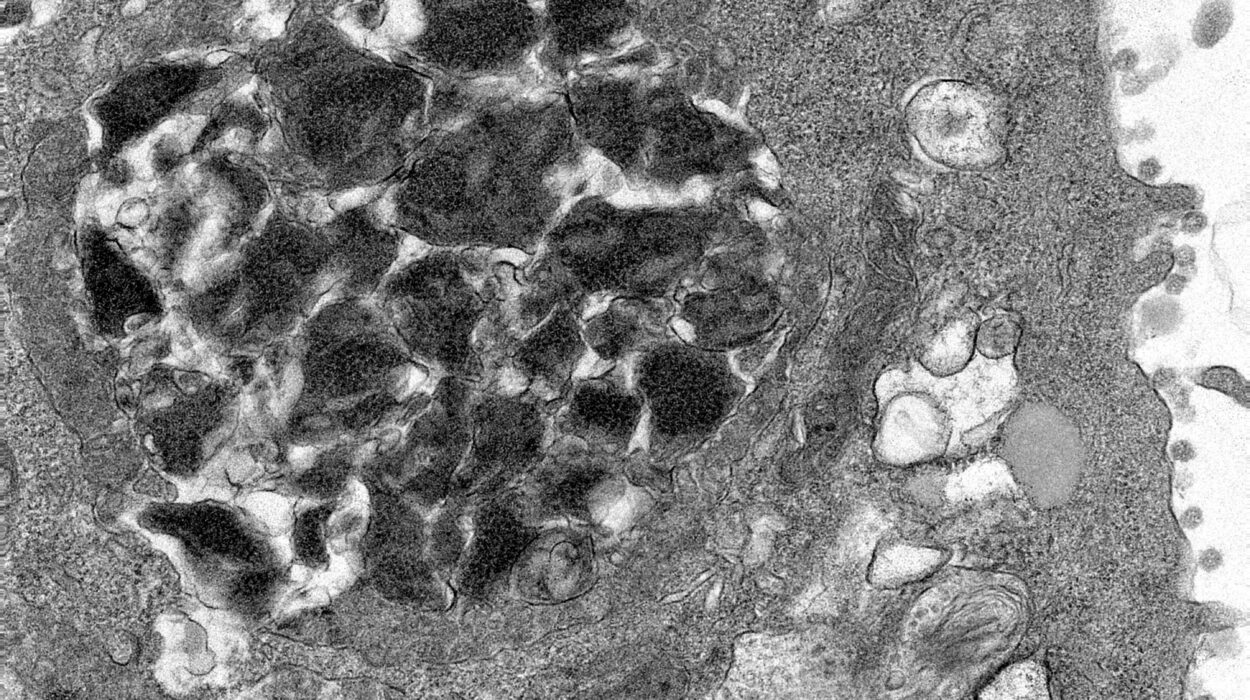Of all the biological systems within the human body, none is more complex, mysterious, or awe-inspiring than the nervous system. At the core of this intricate web lies the brain, the most advanced organ in the known universe—a three-pound bundle of tissue that allows us to think, feel, move, remember, dream, and question our place in the cosmos.
Neurology is the medical specialty that seeks to understand, diagnose, and treat disorders of the brain, spinal cord, nerves, and muscles—collectively known as the nervous system. But this field is more than just the study of neurons and axons. It’s an exploration into what makes us human.
In this article, we’ll take a deep and engaging dive into the world of neurology. We’ll unravel the structure and function of the nervous system, trace the evolution of neurological science, examine the diseases that threaten this delicate system, and explore the frontiers of neuroscience that hint at a bold new future. Whether you’re curious about the mechanics of memory, the intricacies of epilepsy, or the promise of brain-machine interfaces, this article will serve as your comprehensive guide.
The Nervous System: Highways of Thought and Movement
To understand neurology, we must first understand the nervous system—the body’s high-speed communication network. Every thought, action, and sensation travels along this vast system of wires, connections, and control centers.
The nervous system is broadly divided into two parts: the central nervous system (CNS) and the peripheral nervous system (PNS).
The central nervous system consists of the brain and spinal cord. It’s the command center of the body. The brain interprets data, makes decisions, stores memories, and regulates everything from heartbeat to behavior. The spinal cord acts like a high-speed cable, relaying messages between the brain and the body.
The peripheral nervous system is everything else: the vast network of nerves that branch out from the spinal cord and brain to reach every inch of your body. These nerves carry messages in two directions: afferent signals go toward the brain (sensory input), and efferent signals go from the brain to the muscles (motor commands).
Within the PNS, there’s also the autonomic nervous system, which controls involuntary functions like breathing, heartbeat, and digestion. This system further splits into the sympathetic (“fight or flight”) and parasympathetic (“rest and digest”) systems, maintaining the body’s balance and adapting to stress or relaxation.
Neurons: The Building Blocks of Thought
At the core of all nervous system function is the neuron, a specialized cell designed to transmit electrical impulses. Neurons are the stars of the neurological universe—tiny but mighty.
Each neuron consists of three basic parts:
- Dendrites: Branching structures that receive signals from other neurons.
- Cell body (soma): The control center where signals are processed.
- Axon: A long fiber that transmits signals to other neurons or muscles.
Neurons communicate through a combination of electrical impulses and chemical messengers called neurotransmitters. When an electrical signal reaches the end of an axon, it triggers the release of neurotransmitters across a microscopic gap called a synapse. These chemicals then bind to receptors on the next neuron’s dendrites, continuing the chain of communication.
This process happens at lightning speed—millions of times per second, in billions of neurons, forming trillions of connections.
The Brain: A Universe Within
The brain is often compared to a supercomputer, but in reality, it’s far more powerful, adaptable, and creative. Let’s take a tour of its main regions:
- Cerebrum: The largest part, divided into two hemispheres and four lobes—frontal, parietal, temporal, and occipital. The cerebrum is responsible for voluntary movement, sensory perception, speech, reasoning, and emotions.
- Cerebellum: Located beneath the cerebrum, it handles coordination, posture, and balance.
- Brainstem: The most primitive part of the brain, controlling vital functions like breathing, heart rate, and consciousness.
- Limbic system: A set of structures involved in emotion, memory, and motivation, including the amygdala, hippocampus, and hypothalamus.
Each part of the brain works in harmony, yet distinct areas specialize in different tasks. The prefrontal cortex, for example, governs decision-making and impulse control, while the visual cortex processes images from our eyes. Even slight damage to specific areas can lead to dramatic changes in personality, perception, or movement.
A Brief History of Neurology
Neurology, as a field, has deep roots in ancient history but blossomed only recently. Early physicians like Hippocrates speculated that the brain was the seat of intelligence, but it took centuries before science could begin to unlock its secrets.
In ancient Egypt, the brain was discarded during mummification—considered unimportant compared to the heart. But by the Renaissance, pioneers like Andreas Vesalius began mapping the brain’s anatomy.
The 19th and 20th centuries saw explosive growth. Paul Broca and Carl Wernicke identified language centers in the brain. Santiago Ramón y Cajal, often called the father of modern neuroscience, used staining techniques to reveal the structure of neurons. Advances in microscopy, electrophysiology, and brain imaging followed, giving rise to the modern discipline of clinical neurology.
Today, neurologists use tools like MRI, CT scans, EEGs, and genetic testing to diagnose and treat a wide range of disorders. The field continues to evolve, blending biology, chemistry, physics, and computer science into a multidisciplinary science of the mind.
Common Neurological Disorders
Neurology deals with a vast spectrum of conditions—some common and treatable, others rare and devastating. Here are some major categories:
Stroke
A stroke occurs when blood flow to part of the brain is interrupted, either by a clot (ischemic stroke) or a burst blood vessel (hemorrhagic stroke). Deprived of oxygen, brain cells die rapidly, leading to paralysis, speech problems, and other deficits. Prompt treatment is essential to minimize damage.
Epilepsy
Epilepsy is a chronic condition marked by recurrent seizures—sudden surges of electrical activity in the brain. Seizures can be convulsive or subtle, affecting consciousness, behavior, or sensation. Treatments include anti-seizure medications, lifestyle adjustments, and in some cases, surgery.
Multiple Sclerosis (MS)
MS is an autoimmune disease in which the immune system attacks the myelin sheath that insulates nerve fibers. This disrupts communication between the brain and body, causing fatigue, vision problems, muscle weakness, and more. MS follows unpredictable patterns and varies from person to person.
Parkinson’s Disease
A neurodegenerative disorder affecting movement, Parkinson’s is caused by the loss of dopamine-producing neurons in the brain. Symptoms include tremors, stiffness, and difficulty with balance. Treatments aim to manage symptoms and include medications, physical therapy, and in advanced cases, deep brain stimulation.
Alzheimer’s Disease and Dementia
These progressive conditions affect memory, cognition, and behavior. Alzheimer’s is the most common form of dementia and is linked to the accumulation of abnormal proteins in the brain. As neurons die, individuals lose the ability to remember, reason, or care for themselves.
Migraines and Headaches
Though not always serious, chronic headaches can severely impact quality of life. Migraines, in particular, are intense headaches often accompanied by nausea, light sensitivity, and visual disturbances. The underlying causes are neurological and often require long-term management.
Peripheral Neuropathy
This condition involves damage to peripheral nerves, leading to tingling, numbness, pain, or weakness—often in the hands or feet. Causes include diabetes, infections, and certain medications.
ALS (Amyotrophic Lateral Sclerosis)
Also known as Lou Gehrig’s disease, ALS is a fatal neurodegenerative condition that affects motor neurons. Over time, patients lose the ability to move, speak, and breathe, though their cognitive abilities often remain intact.
How Neurologists Diagnose and Treat
Neurologists are highly trained specialists who use a variety of techniques to assess the nervous system. The process often begins with a neurological exam, testing reflexes, muscle strength, sensation, coordination, and cognitive functions.
They may order imaging tests:
- MRI (Magnetic Resonance Imaging) for detailed brain and spinal cord scans.
- CT scans for detecting bleeding or structural issues.
- EEG (Electroencephalogram) to record brain wave activity, especially in epilepsy.
- Lumbar puncture (spinal tap) to test cerebrospinal fluid for infections or inflammation.
Once a diagnosis is made, treatment can range from medications, physical therapy, and surgery to lifestyle changes or even genetic counseling. Neurology often overlaps with psychiatry, neurosurgery, endocrinology, and rehabilitation medicine.
The Mind-Body Connection
One of the most profound insights from neurology is that our mental experiences—thoughts, emotions, consciousness—emerge from physical processes in the brain. This realization blurs the line between neurology and psychology.
Conditions like depression, anxiety, and PTSD have neurological underpinnings. So do disorders like autism spectrum disorder, ADHD, and bipolar disorder. As brain imaging becomes more sophisticated, researchers are mapping the circuits responsible for mood, reward, empathy, and self-awareness.
Understanding the mind as a product of the brain doesn’t diminish its wonder—it enhances it. Every sensation, memory, or dream is a miracle of electrical and chemical activity.
The Frontier of Neuroscience: What the Future Holds
Neurology is not a static field—it’s racing forward. Here are some exciting developments on the horizon:
Brain-Computer Interfaces
Imagine controlling a computer or prosthetic limb just by thinking. Thanks to BCIs (brain-computer interfaces), this is becoming reality. These systems translate brain signals into commands, offering hope to paralyzed patients and opening new dimensions in human-machine interaction.
Neuroplasticity and Brain Training
The brain can rewire itself in response to experience—a property known as neuroplasticity. This discovery has revolutionized stroke rehab, learning techniques, and even treatments for trauma. With targeted training, people can recover functions once thought permanently lost.
Gene Therapy and Precision Medicine
Genetic mutations cause many neurological diseases. Gene therapy seeks to correct these mutations by inserting healthy genes into affected cells. Combined with personalized medicine, this approach may offer cures to previously untreatable conditions.
Artificial Intelligence in Neurology
AI is transforming diagnostics. Algorithms can now detect early signs of Alzheimer’s, analyze MRI scans faster than humans, and even predict seizures before they happen. As data grows, AI will become an essential partner in neurological care.
Mapping the Connectome
The connectome is a complete map of neural connections in the brain. By charting this map, scientists hope to understand how different regions work together—and how disruptions lead to disease. It’s a monumental task, but one that could redefine brain science.
Neurology and Ethics: Navigating New Terrain
With great knowledge comes great responsibility. As we decode the brain, ethical questions abound.
- Should we enhance cognition with neurotechnology?
- Who owns the data from brain scans?
- Can neuroscience be misused for manipulation or control?
- How do we protect the rights of those with neurological impairments?
Neurologists must balance scientific progress with compassion, privacy, and human dignity.
Conclusion: The Brain as the Final Frontier
Neurology is more than a medical specialty—it’s a journey into what it means to be alive, aware, and connected. It examines the essence of identity, the fragility of memory, and the resilience of the human spirit.
From treating devastating diseases to unlocking the mysteries of consciousness, neurologists stand at the crossroads of biology, technology, and philosophy. The brain may be hidden inside the skull, but its reach is infinite. It dreams, loves, creates art, solves equations, builds cities, and imagines other worlds.
In exploring neurology, we explore ourselves.
And though the path is long, and the questions endless, one thing is clear: there is no greater adventure than understanding the mind that asks the question.






